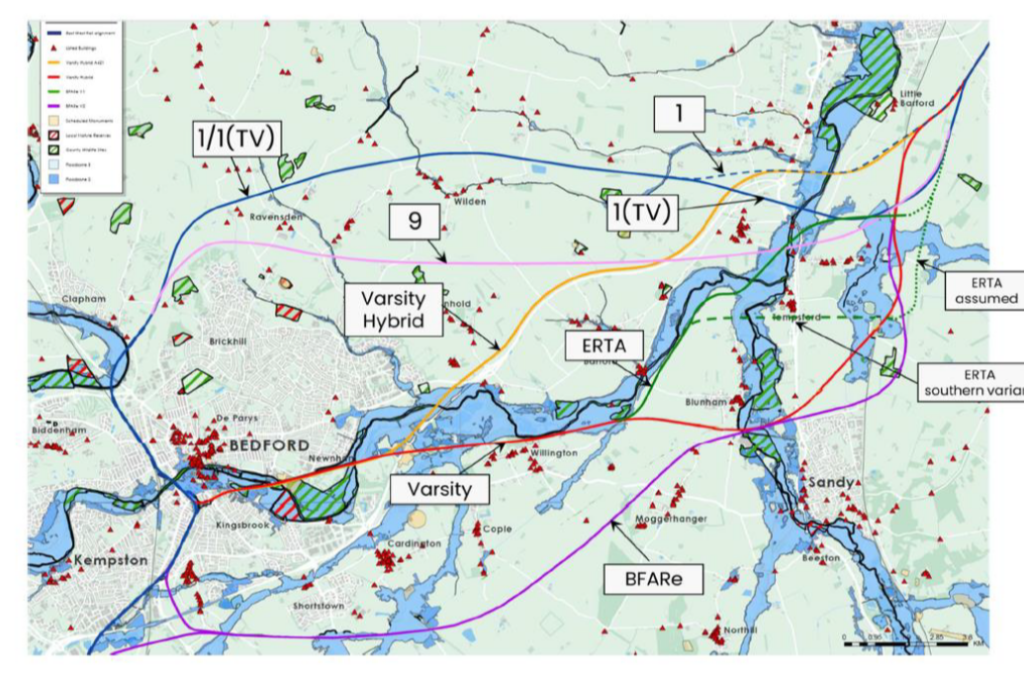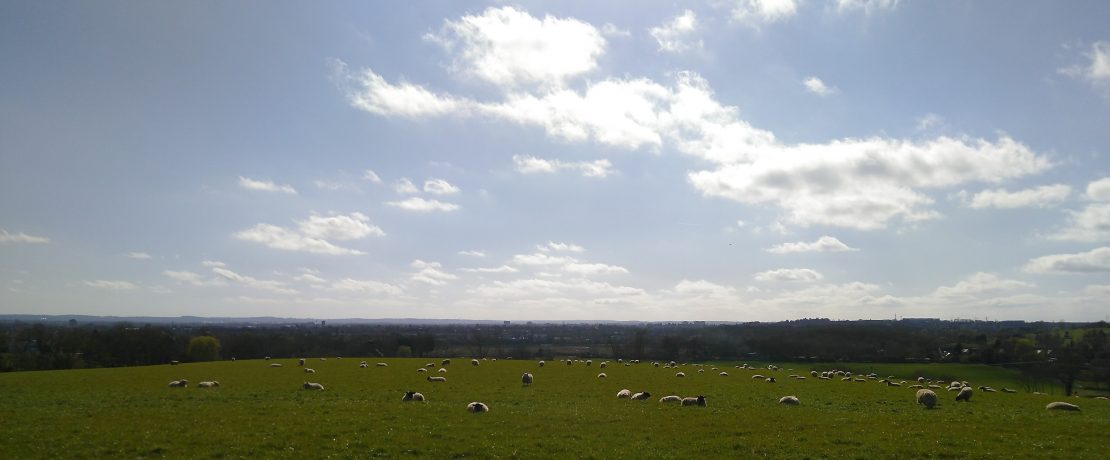Bedford Borough Council Briefing on options for East West Rail
On 6th February the Mayor of Bedford, Tom Wootton, hosted a briefing for Council members, community groups and members of the public, to present the findings of two studies on alternative southern routes for East West Rail (EWR).
The first study, undertaken by Systra, engineering consultants specialising in public transport, reviewed the wider economic impacts of EWR on Bedford.
The purpose of the second study by independent rail consultants SLC Rail, was to understand how well alternative route options perform compared to the preferred route declared by the East West Rail Co (EWR Co). The routes were analysed against 13 criteria.
The alternative routes considered included the original Varsity route, plus routes put forward by campaign groups Bedford for a Re Consultation (BFARe) and the English Regional Transport Association (ERTA) as shown on the map below.

Neither of the studies came to any firm conclusions
The Systra study found that the overall economic benefits to Bedford from EWR were substantial, estimated to be worth £257m to £268m over a 60 year period. However, whilst the EWR Co’s chosen route is seen as bringing the most economic benefits, they reported that the difference between their route and the alternative options is comparatively limited, in a range of 2 to 4%.
In the SLC study, each of the alternative routes was compared to the EWR Co preferred route according to the following criteria:
- Impact on residential properties
- Environmental impacts including flooding
- Carbon impacts
- Construction costs
- Operational costs
- Economic rationale
- Predicted benefits (including regeneration, GVA and housebuilding)
- Construction impacts
- Loss of car parking
- Air quality and associated health impacts
- Local traffic impacts at proposed station locations and proposals for their mitigation
- Suitability for freight and the impact of it
- Impact on Local Plan 2040 sites
In summarising the findings of the SLC study, Jon Shortland, the Council’s Chief Officer – Planning, Infrastructure & Economic Growth said, “The analysis does not throw up a clear winner amongst the routes considered. The analysis does not show any route to be clearly superior to EWR’s proposal. It will be for decision makers to determine which of the criteria are of most importance in their decision making processes.”
What is the basis for decision making?
What is clear from these remarks is that the basis for making the choice about which route EWR should take is not simple or objective. It is largely a matter of judgement for the key stakeholders who make the decision, i.e.. the government, EWR Co and Bedford Borough Council, based on their views of which issues in the criteria are of most importance and given most weight.
EWR Co have always been clear that the key priorities they have adopted for the railway, in addition to improving public transport links, are to stimulate economic growth and open up substantial areas of land for housing development.
Missing: impact on the countryside
From CPRE Bedfordshire’s point of view, the most remarkable feature of these studies, and the reports published to date by EWR Co and the Council, is the complete lack of recognition given in the consideration of environmental impacts, to the effect of the railway on the countryside and the character of the landscape, as an issue of substance. This is despite the fact that the countryside, which provides the core setting for the rural nature of their communities, is hugely valued by residents and is a major source of their objections.
Neither is there any significant weight given to the fact that the northern route would result in a much more substantial loss of Grade 2 (Best and Most Versatile) agricultural land than southern alternatives.
For many years CPRE Bedfordshire have been expressing alarm about developer ambitions to create new towns in the north of the Borough at Twinwoods (6,000 to 7,000 houses) and Wyboston, (7,000 to 10,000 houses). There is no doubt that the current chosen route for EWR would strengthen the hand of these developers and threaten to devastate substantial areas of open countryside and quiet rural villages that would be lost for ever.
In comparison, alternative southern routes travel through areas which, as well as some areas of countryside, include significant areas of land already utilised for housing and commercial activity.
Our conclusion
These studies do not present definitive evidence that the southern routes analysed bring more benefits than EWR Co’s chosen route, but the absence of any consideration of the impacts of the route on the countryside represents a major flaw in the case for support of EWR Co’s route.
We very much hope that the Mayor will take an assertive attitude on these matters and defend our local countryside, making sure that the rural communities in the north of the Borough are not blighted by a tsunami of over development triggered by East West Rail.
Want to dig deeper?
You can find the full reports on the Borough Council website.








